|
|
|
Sort Order |
|
|
|
Items / Page
|
|
|
|
|
|
|
| Srl | Item |
| 1 |
ID:
076458
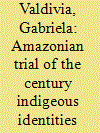

|
|
|
| 2 |
ID:
143664
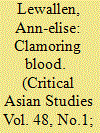

|
|
|
|
|
| Summary/Abstract |
The tension between silence and vocalization, embrace and rejection, of Ainu ancestry has been a key factor in negotiating Ainu subjectivity since Ainu territories were colonized in 1869. As early as 1799, expressions of Ainu ethnicity were alternately cloaked and exaggerated as Japan vacillated between assimilation and segregation policies in eastern Hokkaido Ainu communities. Officially recognized as Japan's indigenous peoples in 2008, Ainu subjectivity has become increasingly politicized as the state and other stakeholders seek to define Ainu ethnicity for future legislation. Today Ainu belonging is frequently gauged by bodily metaphors of a vocalized blood. Cultural sensibility and blood are often conflated in Ainu discourses of identity: Ainu revivalists report that a sensation of “clamoring blood” (J: chi ga sawagu) inspires them to revisit ancestral memories and begin fashioning Ainu identities. Historically, intra-Ainu relations were not bound to blood but instead embodied in material expressions, such as invisible cords for women and crest-like emblems for men, symbols that enabled flexibility where needed. Since the twentieth century, the hyper focus on blood raises the specter of colonially imposed rhetorics of eugenics, assimilation policies, and specifically, the problem of race. Relatedness in the Ainu community is not exclusively defined by “consanguineal relations”; rather, a long history of adopting ethnic Japanese children and non-Ainu into Ainu families renders complex the question of identity. This article assesses how immutable notions of racial difference intersect with self-determination and current articulations of Ainu identity.
|
|
|
|
|
|
|
|
|
|
|
|
|
|
|
|
| 3 |
ID:
171213
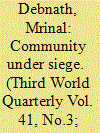

|
|
|
|
|
| Summary/Abstract |
This article presents and analyses the voices and responses of the research participants about the impact of exclusionary formal and informal education policies imposed on the Santal community in Palashpur, Bangladesh (Palashpur is a pseudonym for the site of my research; it is also a metaphor for contested space where the colonial power and politics of the nation state exert domination and subordination). These policies are implemented through a state-led, centralised, monolingual and exclusionary curriculum in local primary and secondary schools, schools run by the churches, and schools supported by nongovernmental organisations. The education policies in Bangladesh bear the legacy of the combined forces of cultural homogenisation and social exclusion rooted in the colonial learning structure and its objectives. Embedded in these policies are elements of the civilising mission, an ultra-religious assimilative but exclusionary nationalistic agenda, and Western values of modernity and development. In this rural context, these alien ideologies and practices in education are actively engaged in eliminating local institutions, the knowledge system of indigenous peoples, the texture of their lives, their joy of living, their spirituality and their sense of being. This article reveals how, imposed from above, education policy and practices have dispersed an indigenous community to negotiate a life that goes against the interests of the community itself and its members.
|
|
|
|
|
|
|
|
|
|
|
|
|
|
|
|
| 4 |
ID:
127084
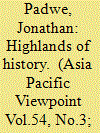

|
|
|
|
|
| Publication |
2013.
|
| Summary/Abstract |
The notion that Cambodia's highland people may claim a distinct 'Indigenous' identity has emerged only recently in Cambodia. To date, advocacy for rights under the banner of indigeneity has produced few results for highlanders. Among the problems faced by advocates for Indigenous rights, problems of definition and translation represent an important challenge. Arguing that concepts like 'Indigeneity' are not simply adopted ex nihilo in new settings, but are rather incorporated into existing structures of meaning, this paper explores culturally produced understandings of who highlanders are, concentrating in particular on the way that the term 'Indigenous' has been translated into Khmer. The use of the Khmer word daeum, or 'original', to distinguish between Indigenous and other forms of ethnic belonging in the newly derived translation of 'Indigenous Peoples' points to historically sedimented beliefs about highlanders as living ancestors of modern Khmers.
|
|
|
|
|
|
|
|
|
|
|
|
|
|
|
|
| 5 |
ID:
120789


|
|
|
|
|
| Publication |
2013.
|
| Summary/Abstract |
In many ways, the structural violence of settler colonialism continues to dominate the lived experience of Indigenous populations, including Aboriginal and Torres Strait Islander peoples in contemporary Australia. One aspect of this structural violence concerns the regulation of Indigenous identity, today perpetuated through state monitoring of the 'authenticity' of Aboriginal people. This article argues that the contest over Indigenous identity perpetuates a form of symbolic political violence against Indigenous people. It considers the ways in which structural violence against Indigenous identity has featured in Australia's settler colonial regime and examines the particular violence faced by urban-dwelling Aboriginal people, who endure much contemporary scrutiny of the 'authenticity' of their Indigeneity. As a case study, the article examines the symbolic violence associated with a particular legal case in Australia and, in light of this analysis, concludes that settler colonies could make a decolonising gesture by legislating for the protection of Indigenous identity.
|
|
|
|
|
|
|
|
|
|
|
|
|
|
|
|
| 6 |
ID:
129833
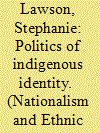

|
|
|
|
|
|
|
|